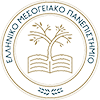Course Objectives
The course aims to extend the “Monitoring-Decision-Execution” closed-loop cycle of the typical Autonomous systems, so it includes the modern IoT applications that might scale from a smart home or greenhouse to a smart city and from autonomous driving to emergency management. In such scalable architectures, it is of critical importance the communication and interoperation between the subsystems that consist the total system. Hence, this course at first analyses the different parts of an IoT system along with their internal organization and then focuses on the interoperation and data exchange across the interfaces it comprises. Finally, it presents various methods for big data management, along with various modern IoT applications.
The course includes both a theoretical and a laboratorial part.
Theoretical Part
- INTRODUCTION
- PERVASIVE AND UBIQUITOUS COMPUTING
- AUTOMATION SYSTEMS
- INTERNET OF THINGS
- SENSORS
- PROXIMITY SENSORS
- ENVIRONMENTAL SENSORS
- INERTIAL SENSORS
- MICROCONTROLLERS
- ARCHITECTURE
- EEPROM
- INTERRUPTS
- ACTUATORS
- RELAYS
- MOTORS
- SERIAL COMMUNICATION PROTOCOLS
- ASYNCHRONOUS AND SYNCHRONOUS SERIAL COMMUNICATION
- I2C
- SPI
- UART AND RS232
- INDUSTRIAL PROTOCOLS (CAN, RS482, MODBUS, HART, PROFIBUS, ISA 100, AS INTERFACE)
- NETWORK TECHNOLOGIES AND ARCHITECTURES
- WIRELESS SENSOR NETWORKS (WSN)
- INTRODUCTION
- BLUETOOTH AND BLE
- WLAN
- 802.15.4
- LPWAN
- INDUSTRIAL WSN
- NETWORKING AND PROCESSING HIERARCHY AT THE SERVER SIDE
- CLOUD AND EDGE COMPUTING
- VIRTUALISATION AND DOCKERS
- SDN / VNF
- INTERFACES AND PROTOCOLS FOR INTEROPERABLE COMMUNICATION BETWEEN EDGE AND CLOUD INFRASTRUCTURES
- HTTP
- MQTT
- COAP
- XMPP
- JSON / GRPC
- SNAP7
- WEB AND MOBILE INTERFACES FOR USER INTERACTION
- SECURITY ISSUES FOR IOT
- INTELLIGENT DECISION MAKING AND BIG DATA PROCESSING
- VARIOUS PHYSICAL COMPUTING APPLICATIONS
- BEACONS AND RFID
- RTLS
- NFC
- AUGMENTED AND VIRTUAL REALITY
- EDUCATIONAL ROBOTICS
Exercises and projects based on the Arduino microcontroller. The curriculum includes the following:
- MICROCONTROLLERS
- Sensors
- Actuators
- Communications
- WSN
Final team project on developing an IoT application
Bibliography
- Lecture slides
- Internet articles
- Research papers
- Mark Weiser (1991) The computer for the 21st century. Scientific American, pp. 94–104
- Paul Dourish and Genevieve Bell, 2008. Yesterday’s Tomorrows: Notes on Ubiquitous Computing’s Dominant Vision. Personal and Ubiquitous Computing.
- Prolog, Chapter 1, and Chapter 4 from David Rose (2014) Enchanted Objects: Design, Human Desire and The Internet of Things, Scribner.
- Chapter 16, Nabaztag, an Ambiguous Avatar, from Mike Kuniavsky (2010) Smart Things, Ubiquitous Computing User Experience Design, Elsevier
- Rogers Y,Hazlewood W,Marshall P,Dalton NS,Hertrich S, (2010) Ambient Influence: Can Twinkly Lights Lure and Abstract Representations Trigger Behavioral Change?, UbiComp 2010
The Secret Life of Electronic Objects – A Dunne, F Raby (2002) Design Noir: The Secret Life of Electronic Objects
